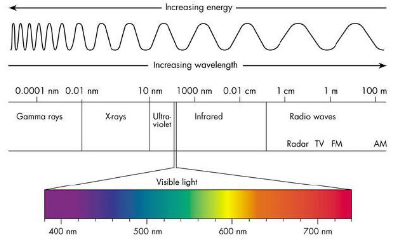Light and Sound - Grades 3-5
Option 1 - Making a Spectroscope
Nebraska Science Standards
5.2.3.b Recognize that light travels in a straight line and can be reflected by an object (mirror)
5.2.3.c Recognize that light can travel through certain materials and not others (transparent, translucent, opaque)
Objective: The objective of this activity is to provide hands-on demonstrations that help students to understand the properties of light.
Materials
Provided by Student:
- Empty paper towel roll
Provided by CSM:
- Prism & Flashlight
- Laser pointer & Mirror
- Making a Spectroscope
- Craft knife or/scissors (for volunteers to use)
- Blank/old CD
- Pencil
- Small piece of cardboard or cardstock
- Tape
Set up:
- Take ~15 mins to introduce yourself and go through the discussion points below
- Break students into groups and explain the following: do not shine the laser in someone's eyes
- Decide if it is easier to break class into 2 bigger groups (1 for light demo 1 for spectroscope) or to pass around and do spectroscope as a class
Discussion:
- Why is it important for scientists to study light?
- Light allows us to see our world and perceive visual information.
- How do light waves travel? What’s the difference?
- Light travels in “energy packets” called photons. Photons look like waves. Light travels in transverse waves. These waves are like ocean waves- they go up and down. The reason why we are able to see is because light bounces off the surface of an object to our eyes.
- What is the difference between reflection and refraction of light?
- Reflection occurs when light bounces off objects.
- If light bounces off a smooth surface, the light will bounce off at equal angles, such as a mirror or water.
- Refraction occurs because light bends.
- Light bends as it passes from one substance to another. Imagine a glass of water with a straw. The straw appears to be bent because the light passes from the air to the water.
- Reflection occurs when light bounces off objects.
- How do we see color?
- Absorbed light is taken in and not reflected.
- A red apple appears red because it absorbs all the other colors and reflects red.
- ROYGBIV --
- Absorbed light is taken in and not reflected.

- How is a rainbow formed?
- As light passes through a prism it bends light (refraction) and is reflected back to your eyes as a rainbow. Raindrops act like tiny prisms.
- How fast does light from the sun get to the earth?
- 499 seconds for light from the sun to travel to earth, which is about 8 minutes and 20 seconds.
- How do we see light?
- Light passes through the cornea, pupil, and lens before hitting the retina. The iris controls the size of the pupil. In a dark room the iris gets smaller, allowing the pupil to dilate. In a bright room or outside the iris gets bigger, which does not let as much light pass through.
- What speed does light travel?
- 186,282 miles per second! That’s like running around the entire Earth in 7.5 seconds! In theory, nothing travels faster than light.
Activity 1:
*Ensure students know not to point laser pointer in someones eye -- if it happens the activity will be over* -- Ensure students take care with slinky so it doesn't get tangled.
Purpose of activity:
Students experiment with refraction- the bending of light through different mediums and reflection- light bouncing off objects.
Procedure:
- Allow the students to play around with the items at the station
- Prism and flashlight can be used to “bend” white light (refraction) and make rainbows
- Laser pointer and mirror can be used to “bounce” the light (reflect) onto another object
Activity 2:
Making a Spectroscope - See the Rainbow:
Procedure:
- Use a craft knife (an adult should do this) to cut a thin slit at a 45° angle toward the bottom of the cardboard tube.
- Directly across from the slit, make a small peephole or viewing hole (another step for an adult).
- Trace one end of your paper towel roll onto your small scrap of cardboard. Cut it out.
- Cut a straight slit right across the center of your cardboard circle.
- Tape the circle to the top of your spectroscope.
- Insert the CD into your 45° angled slit with the shiny side facing up.
Using the Homemade Spectroscope
Start by taking your spectroscope outside. Point the top slit up at the sky (NOT directly at the sun). Look through the peephole. You will see a rainbow inside!







